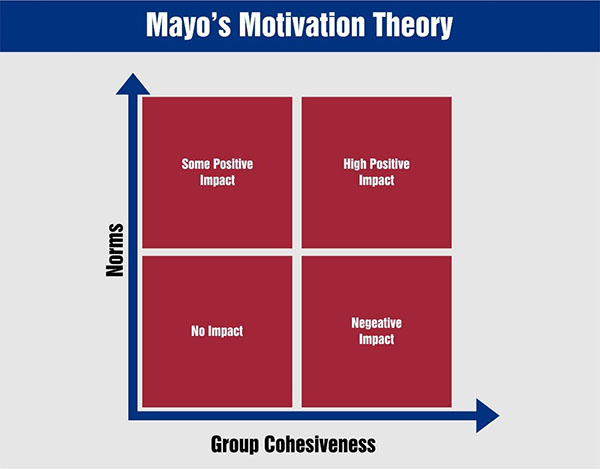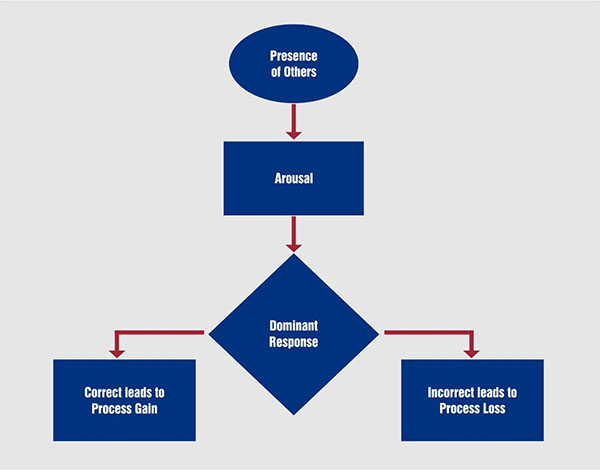
The science of psychology, as both phenomena and theory has its place at the top in Talent Manager’s Playbook. How to otherwise answer the speculations surrounding behavior of employees? Psychology has long made its ascension to the pedestal of science and the point of the discussion here is definitely not to reassure this fact. The focus here instead hovers on a rather new entry in the “Class of Science” – Talent Management. Obvious things cover our eyes till someone comes out and points to it for the whole world to see.
The curtains were first drawn open on the psychology behind performance in the 1920’s when Elton Mayo and Fritz Roethlisberger began research at the Western Electric Company of Hawthorne. Amidst both dim and bright lights, a major factor driving employee performance (yet never thought of before) came to light – socio-psychological factors.
It was not pay, but team dynamics that drove performance. The takeaway - People perform the best in a cohesive group that have a positive outlook (high ‘norm’).
Companies still suffer from the challenges of finding the right talent with both “soft skills” and “culture fit”, which have become the two most elusive and sought after traits for talent managers.

Shortly into understanding the Hawthorne experiment and Elton Mayo’s theory, one stumbles upon the finding that people tend to perform better when someone else is watching. A lot of water has passed under this bridge since then and there will be quite a number of those who freeze the moment those supervisory glances fall on their workstation.
The question here is not of the validity, but of the variables in a phenomena. Robert Zajonc, in his social facilitation model, sketched clear details of the psychology behind this rather tightrope of a question – to supervise or not? People tend to perform better when supervised on routine tasks. Employees in creative and strategic jobs tend to do much better when left unsupervised. Zajonc watered it down to sensory ‘arousal’ when others are present and the dominant response it elicits.

Performance management, when broken down, has two basic components or perspectives:
McGregor’s X-Y theory sets ground to bring focus to leaders as talent. It dives into two distinct leadership styles to understand how leaders can influence organizational effectiveness.
If you take an authoritarian leader and combine this with a micromanager, the result will culminate into a “Theory X” manager. These leaders are results oriented with an unflinching dedication towards turnaround time. They scrutinize and are often attributed to be poor listeners. They are non-participative and one-way communicator with an elitist and proud humming in the background – the classic “bad boss”. However, one cannot deny the effectiveness of these managers in assembly line, data entry jobs and other routine enterprises.
Collaboration, participation and always being open to suggestions are traits that stand at the very heart of McGregor’s Theory Y. Here “Y” stands opposing “X”. A Y-manager believes that people are capable of taking ownership and responsibility to get the job done. Though goal oriented, you will never see this one shouting at a subordinate (unlike the X-manager). This manager, to put in the word of social facilitation and social inhibition model, leaves the room for its employees to perform and shine at an individual pace without driving people to a wall.
It is anybody’s guess that Theory Y managers will have the last laugh while talent managers chalk out their succession planning. However, these styles are just extremes and most of the leaders lie somewhere on the spectrum in between the two. You can have a hidden Theory-Y in a presumably Theory-X manager who is exhibiting this behavior to meet short-term goals.
Adaptation – the word that probably has one of the biggest currencies in today’s shape-shifting economy. Talent Managers need to understand the learning, unlearning and re-learning potential of employees to mark them as ‘talent’ to gain organizational excellence.
It starts by considering the organization as system, which it is. Systems are entities and as with each one of them, they have ideas, perspective or a modus vivendi that determines its trajectory:
Entropy – a phenomena that was never as apparent as it is today. Talent Management is a far cry from an exclusive, and at times a bit aloof, approach towards human capital. Talent strategies today are aligned with organizational effectiveness and at its base is the objective to avoid entropy.
Homeostasis is a natural tendency to be resilient in the face of a change and maintain its status quo. It perhaps is the biggest impediment to change management. Opposing it is the concept of Adaptation that defines the natural tendency of any self-adaptive system to drive change to survive or thrive. Talent should move from Homeostasis to Adaptation as a natural tendency or intuition. Helping in the transition is the Feedback Loop, which is a cyclic interaction among various systems like:
Talent Management at its base has a strong foundation of socio-psychological phenomena. Understanding it will allow you to see the big picture broken down to its finest detail. Most of the times the near-sightedness and far-sightedness of the Talent-scape results in missing out on both the complete picture and microscopic details of the road ahead. It is almost criminal to lose sight of or overlook these aspects embedded in psychology in a data-driven world. The solution lies in understanding the very theories that drive talent management.

CredBadge™ is a proprietary, secure, digital badging platform that provides for seamless authentication and verification of credentials across digital media worldwide.
CredBadge™ powered credentials ensure that professionals can showcase and verify their qualifications and credentials across all digital platforms, and at any time, across the planet.

Please enter the License Number/Unique Credential Code of the certificant. Results will be displayed if the person holds an active credential from TMI.